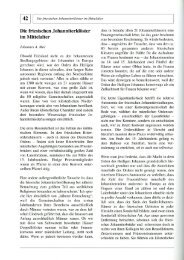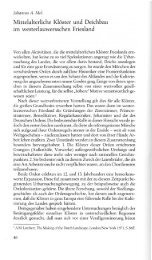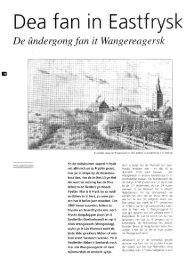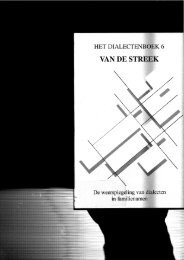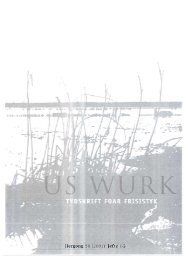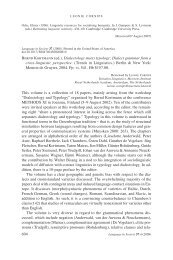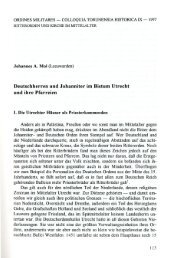The Lantern-Roofed Tombs in Thrace and Anatolia: Some Evidence ...
The Lantern-Roofed Tombs in Thrace and Anatolia: Some Evidence ...
The Lantern-Roofed Tombs in Thrace and Anatolia: Some Evidence ...
Create successful ePaper yourself
Turn your PDF publications into a flip-book with our unique Google optimized e-Paper software.
lantern-roofed burial chamber. <strong>The</strong> Plovdiv tomb comes from the end of the<br />
4th or first decade of the 3rd century B.C.<br />
However, while <strong>in</strong> <strong>Thrace</strong> only three monuments display<strong>in</strong>g such<br />
technique are known, this k<strong>in</strong>d of roof<strong>in</strong>g seems to be widely used <strong>in</strong><br />
<strong>Anatolia</strong>. <strong>The</strong> tumular tomb at Belevi near Ephesos, first noted <strong>in</strong> 1827,<br />
dates to the 6th century B.C. <strong>and</strong> provides the earliest example of lantern<br />
roof<strong>in</strong>g <strong>in</strong> the ancient world known so far. 12 <strong>The</strong> funerary monument is<br />
situated <strong>in</strong> the southern half of a big tumulus surrounded with krepis <strong>and</strong><br />
consists of long dromos, rectangular antechamber, a second rectangular<br />
lantern-roofed antechamber <strong>and</strong> rectangular burial chamber. <strong>The</strong> f<strong>in</strong>ds from<br />
the mound clearly <strong>in</strong>dicate that the Archaic monumental tomb was<br />
presumably a heroon <strong>and</strong> was used for secondary ritual activities dur<strong>in</strong>g<br />
extended period – until the Early Hellenistic Age. Actually, <strong>in</strong> <strong>Anatolia</strong>, the<br />
lantern-roofed tombs became widespread only dur<strong>in</strong>g the Late Classical <strong>and</strong><br />
Hellenistic Age <strong>and</strong> the architects who built these funerary monuments were<br />
presumably <strong>in</strong>spired from some early remarkable constructions, such as the<br />
tumular tomb at Belevi.<br />
Hellenistic lantern-roofed tombs were discovered <strong>in</strong> several parts of<br />
<strong>Anatolia</strong>. <strong>The</strong> closest region to <strong>Thrace</strong> appears to be Bithynia where four<br />
funerary monuments of this type are known, thus form<strong>in</strong>g the most<br />
significant regional group of lantern-roofed tombs <strong>in</strong> <strong>Anatolia</strong>. Two of them<br />
are located on the southern shore of Propontis. <strong>The</strong> tomb at Mudanya<br />
(ancient Myrleia) was unearthed <strong>in</strong> 1926 dur<strong>in</strong>g digg<strong>in</strong>g of Alçakbayir<br />
tumulus, about 30 m <strong>in</strong> height. 13 <strong>The</strong> monument consists of long dromos <strong>and</strong><br />
rectangular lantern-roofed burial chamber. It dates to the second half of the<br />
4th century B.C. Another tomb was accidentally uncovered <strong>in</strong> Küçük Çukur<br />
locality near Gemlik (ancient Kios) <strong>in</strong> a tumulus, which was destroyed<br />
3





